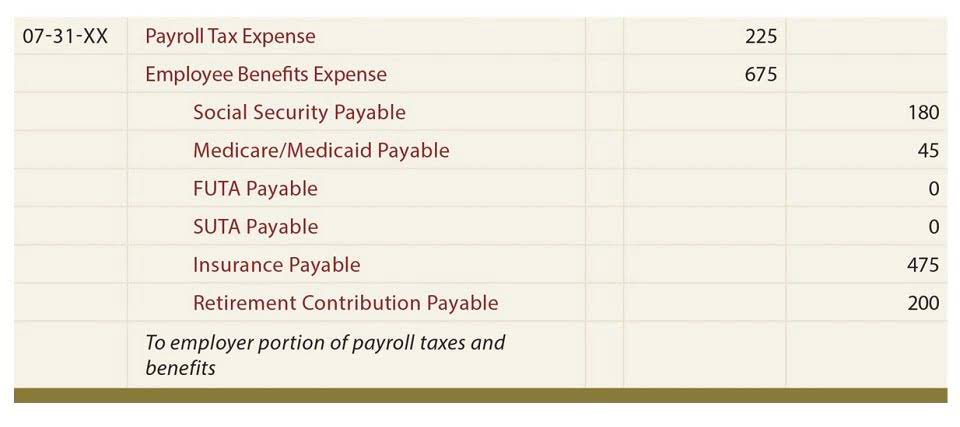Content

Net profit margin can be influenced by one-off items such as the sale of an asset, which would temporarily boost profits. Net profit margin doesn’t hone in on sales or revenue growth, nor does it provide insight as to whether management is managing its production costs. Investors can assess if a company’s management is generating enough profit from its sales and whether operating costs and overhead costs are being contained. For example, a company can have growing revenue, but if its operating costs are increasing at a faster rate than revenue, its net profit margin will shrink. Ideally, investors want to see a track record of expanding margins, meaning that the net profit margin is rising over time. A contribution margin income statement on the other hand categorizes expenses on whether they are variable or fixed. Fixed costs are costs that may change over time, but they are not related to the output levels.

Contribution margin analyzes sales less variable costs, such as commissions, supplies, and other back office expenses . One of the primary uses of the contribution income statement is the break-even analysis of a particular segment. The contribution margin is first calculated by taking sales revenue minus the variable selling and manufacturing costs to get the contribution margin. When contribution margin minus fixed costs equals zero, the break-even point has been reached. If a company has additional sales revenue beyond the break-even point, it makes profit. If the contribution margin is less than the break-even point, the company is operating at a loss. Calculating the contribution margin is an excellent tool for managers to help determine whether to keep or drop certain aspects of the business.
It’s yours, free.
Further, the contribution margin formula provides results that help you in taking short-term decisions. The main drawback of the contribution margin formula is that it leaves business owners with a dollar amount. Luckily, there are a few other ways to look at contribution margin that can help business owners look at their overall contribution margin and product-specific margins with more objectivity.

Moreover, the statement indicates that perhaps prices for line A and line B products are too low. This is information that can’t be gleaned from the regular income statements that an accountant routinely draws up each period. The basic difference between a traditional income statement and a Contribution Margin Income Statement lies in the treatment of variable and fixed expenses.
What Is Net Profit Margin?
The Contribution Margin Calculator is an online tool that allows you to calculate contribution margin. You can https://www.bookstime.com/ use the contribution margin calculator using either actual units sold or the projected units to be sold.
What is contribution margin ratio example?
This may include items such as coffee beans, water, milk, disposable cups, and labor costs which total $4,000. In this example, the contribution margin is $10,000 – $4,000 = $6,000. The contribution margin ratio shows a margin of 60% ($6,000/$10,000). That sounds like a good result.
These costs include equipment rent, building rent, storage space, or salaries (not related directly to production. If they are, you count them as variable costs). Variable costs probably include cost of sales and a portion of selling and general and administrative costs (e.g., the cost of hourly labor). Retail companies like Lowe’s tend to have higher variable costs than manufacturing companies like General Motors and Boeing. Net Profit Or Net LossNet loss or net operating loss refers to the excess of the expenses incurred over the income generated in a given accounting period. It is evaluated as the difference between revenues and expenses and recorded as a liability in the balance sheet.
Benefits of preparing a Contribution Margin Income Statement
Contribution margin which is arrived at by deducting all variable expenses from the total revenue. Operating income looks at profit after deducting operating expenses such as wages, depreciation, and cost of goods sold. Cost of goods sold is defined as the direct costs attributable to the production of the goods sold in a company. While gross profit is generally an absolute value, gross profit margin is expressed as a percentage.
- FundsNet requires Contributors, Writers and Authors to use Primary Sources to source and cite their work.
- For USA hospitals not on a fixed annual budget, contribution margin per OR hour averages one to two thousand USD per OR hour.
- Of the two groups of expenses , it is much easier to control variable expenses.
- In a traditional income statement, companies subtract the cost of sales from revenues to reach gross profits.
- That is it does not include any deductions like sales return and allowances.
Learn more about the standards we follow in producing Accurate, Unbiased and Researched Content in our editorial policy. We will also be learning how to prepare one so that you could use it for your business. This is especially true if the business is publicly owned, though privately-owned businesses would still have to prepare one. As a business owner or manager, you need to know how much money your business is earning as well as how much money the business is spending. However, it cannot be shared by the company with the outside stakeholders of the company because such format is not recognized by any of the concerned authorities and the same is used only for internal purposes. Free Financial Modeling Guide A Complete Guide to Financial Modeling This resource is designed to be the best free guide to financial modeling! Rosemary Carlson is an expert in finance who writes for The Balance Small Business.
What Do People Use the Contribution Income Statement For?
Cutting too many costs can also lead to undesirable outcomes, including losing skilled workers, shifting to inferior materials, or other losses in quality. To reduce the cost of production without sacrificing quality, the best option for many businesses is expansion.Economies of scalerefer to the idea that larger companies tend to be more profitable.
Therefore, we will try to understand what is contribution margin, the contribution margin ratio, and how to find contribution margin. Contribution margin analysis is a measure of operating leverage; it measures how growth in sales translates to growth in profits. Contribution margin income statement is not subject to any external audit. Contribution margins represent the revenue that contributes to your profits after your company reaches its break-even point . Variable costs, no matter if they are product or period costs appear at the top of the statement. Fixed costs are treated the same way at the bottom of the statement. It is helpful to calculate the variable product cost before starting, especially if you will need to calculate ending inventory.
Gross Margin vs. Contribution Margin Example
Another income statement format, called the contribution margin income statement, shows the fixed and variable components of cost information. Since a contribution margin income statement categorizes expenses according to whether they are variable or fixed, it’s much easier to identify which variable expenses can be reduced. In summary, variable costs go up and down depending on the level of activity, whereas fixed costs will remain the same unless there is a “step cost situation”. It is important to assess the contribution margin for breakeven or target income analysis.
What affects the contribution margin?
The cost of materials or product acquisitions are among the key variable product costs considered in the contribution margin. If your raw materials costs increase as a manufacturer, your contribution margin diminishes because of a higher cost basis.
